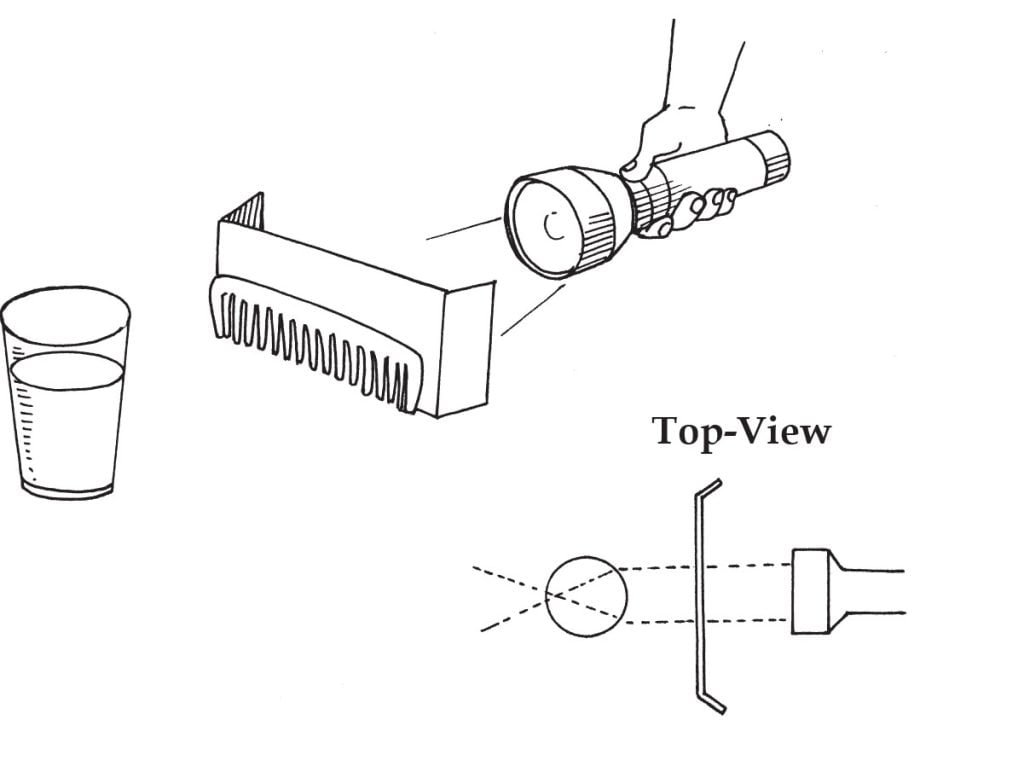
Using Ray Maker which we have made in our earlier experiment we will try to redirect the rays in this experiment.
Things Required:
Ray-making tool (from “Ray Maker”)
Hand lens
Clay
Torch
Clear drinking glass
Water
A drop of milk
Directions:
Fill a glass three-fourths full with water. Set this water-filled glass on a flat surface.
Position the ray-making tool several inches from the glass. Turn on the torch and aim its beam through the teeth of the comb. The separate rays should illuminate their path along the tabletop.
Position the glass so that these rays may strike it in the centre. You may have to raise the ray maker on a book to obtain the best beam angle. Observe the beams from above. What happens to rays as they strike the water-filled glass? How many times does their angle change? To help see the rays, make the water partly cloudy by adding a drop of milk.
Replace the water-filled glass with a hand lens. Position the lens so that the separate beams may be observed striking the centre of the lens. What happens to these rays? Does the hand lens affect the rays in the same fashion as the water-filled glass?
This Is What Happens:
As the mostly parallel light beams struck the water-filled glass, their direction changed. The first change occurred at the point where they entered the vessel. The collision with both the glass containers and water caused the light rays to bend together.
As they travelled through the water, the rays followed a straight path. When they exited the glass, their direction changed once more. Again, the rays wound up closer together. Several inches past the glass, the rays actually crossed over one another to form a bright spot. This special point is called the focus point. At the focus point, light rays are the most concentrated. Beyond the focus point, light rays spread out.

